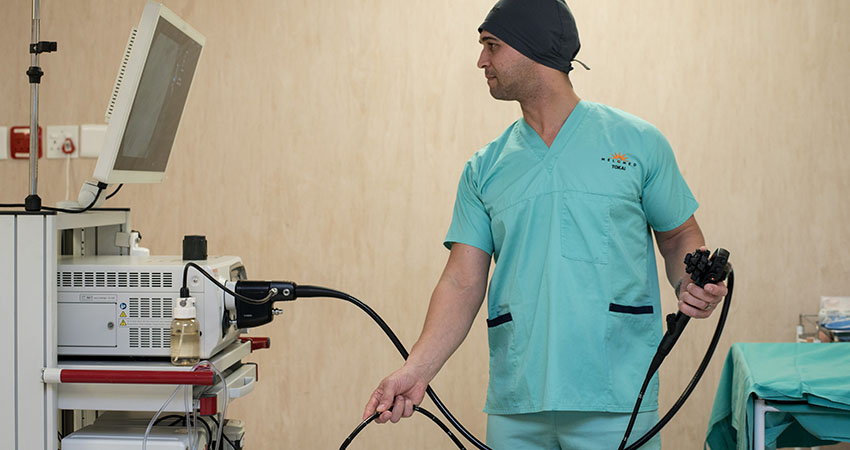
Gastroscopy
In the grand orchestra of our body, the stomach plays a vital role. To truly understand its nuances, Dr Dale Peterson offers gastroscopy services, a gentle procedure that grants a close-up view of your stomach’s inner world, ensuring its harmonious performance in the ensemble of your health.
What is gastroscopy?
Gastroscopy, or upper endoscopy, is a diagnostic procedure whereby Dr Peterson uses a flexible tube with a light and camera, known as a gastroscope, to inspect the inner lining of the upper part of your gastrointestinal tract. This includes the oesophagus, stomach, and the beginning of the small intestine (duodenum).
When would I need a gastroscopy?
This delicate procedure is not just about capturing visuals — it’s about piecing together the story of your digestive health. Reasons we recommend a gastroscopy include:
- Investigating symptoms like persistent heartburn, difficulty swallowing, or stomach pain.
- Detecting inflammation, ulcers, or tumours.
- Confirming conditions like gastroesophageal reflux disease (GERD) or celiac disease.
- Retrieving tissue samples for biopsy.
How can I prepare for the procedure?
Proper preparation ensures clarity, and Dr Peterson strives to make this as straightforward as possible with a comprehensive guide. You can also take note of the following:
- Fasting — Refrain from eating or drinking for 6-8 hours before the procedure to ensure an empty stomach.
- Medication review — Share all your current medications with Dr Peterson. Some, especially those affecting blood clotting, might need adjustments.
- Health conditions — Inform Dr Peterson of any allergies or specific health conditions for personalised care.
What happens during a gastroscopy?
The gastroscopy is relatively straightforward, and understanding the procedure can help alleviate any pre-procedure jitters you may have. Dr Peterson ensures your comfort throughout, using sedation to relieve any strange or uncomfortable feelings.
Here’s what you can expect:
- Dr Peterson will give provide a sedative and local anaesthetic to help numb your throat and keep you relaxed.
- He will ask that you lie on your side and insert a mouth guard to protect your teeth and gums from the gastroscope.
- He then gently inserts the gastroscope through your mouth, guiding it into the stomach and possibly the duodenum.
- As the camera relays images, any necessary samples will be taken.
The entire process usually takes around 30 minutes.
How soon can I resume normal activities?
You can likely return to your regular routine the following day. However, due to the sedative, it’s essential to have someone accompany you home post-procedure and avoid driving for 24 hours.
Schedule your appointment today and take a step towards comprehensive digestive health.
